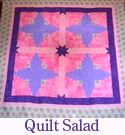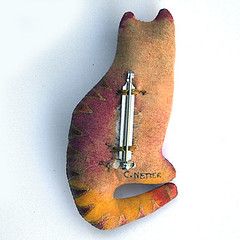Hypertufa is a rock like substance made from cement that works great for outdoor pots. It's porous so plants that like good drainage do well in pots made from it and it survives freezing and thawing much better than pots made from terracotta. I plant many of my winter hardy succulents in pots made from hypertufa. It's not hard to make so I make most of my own pots. Here is a tutorial on how I do it.
To make hypertufa, I use the following materials and items:
1. Portland cement
2. Vermiculite or perlite
3. Spagnum peat moss
4. A container suitable for a mold
5. Large plastic garbage bag
6. Water
7. Protective gloves
8. Dust mask
9. Wire brush such as a cheap grill brush
10. Clothes I don't care about
11. Colorant (optional)
First, the dry ingredients are mixed together. These will be 1 part Portland cement, 1 part spagnum peat and 2 parts either vermiculite or perlite. Sometimes I use 1 part perlite and 1 part vermiculite. Some powdered colorant can be added at this time as well. For a bowl as big as pictured below, 1/4 to 1/2 cup of powdered colorant will color up the mix nicely. Make sure to use fresh, non-hardened Portland cement. If it has sat around in a humid area or gotten wet, it will have hard lumps in it and be useless. Also, make sure you buy just Portland cement. You don't want to buy pre-mixed concrete or mortar. Home Depot carries it in 45 pound bags which is the smallest I found so far.
Use enough ingredients to almost fill the mold you will be using. The mixture will be compressed quite a bit so there will be plenty of empty space in the middle when you are done. I often use a wheelbarrow to mix up the ingredients if I'm makinng something large.
Mix the ingredients very thoroughly. The dry colorant won't show up. Don't worry, it will later when the water is added. Be sure to do this with gloves and a dust mask on. The cement is very very harsh on skin and the dusk is not safe to breath.
Add water slowly and mix.
Mix thoroughly by hand. If you added powdered colorant, the color will start to show now.
Keep slowly adding water and mixing until you can make a ball of the mixture. Squeeze some together. It should not fall apart, nor should it slump down. It should hold it's own shape if lightly tossed from hand to hand. If squeezed tightly in the hand, a bit of water should ooze through the knuckles.I find that the total amount of water used varies somewhat, but it's more important to get the texture right than trying to use the same amount of water each time.
Get your mold ready. The mold should be stiff so it can support quite a bit of weight and smooth so it will release the pot. Make sure it doesn't get narrower towards the top or you'll never get the pot out.
Cut a large trash bag down the sides so it opens up flat and place it in the mold. Here, I am reusing one so it looks dirty. If you do that, make sure the dirty side is on the inside and not touching the mold sides or it could stick to the mold when you're trying to get the pot out.
Place the hypertufa mixture in the mold. It may look like too much, but it'll compress when you form it to the mold.
Now you can shape it to the mold. Go around the edge, pulling mixture from the center to the edges and squeeze against the edge of to mold the compress the mixture. The walls should be about 1 1/2 inches thick for this size pot. For pots half this size you can get away with walls a generous 1 inch thick.
I go around 3 or 4 times, constantly shaping the sides and edges. If the mixture is not too wet, it should mostly stay up by itself with very little slumping.
Once I am pretty satisfied with the sides and edges, I poke a finger in the bottom to make sure it's thick enough. If not, I scrape away some of the sides for the bottom. It should be about 1 1/2 inch thick for a pot this size.
The bottom needs compressing too, as well as the lower part of the sides.
Now it's time to poke drainage holes in the bottom. I just use my finger and make the holes pretty big. They'll close up a little, but that will be taken care of later.
Make sure to put enough holes for good drainage.
Once the holes are done and the pot is the way you want it, it's time to wrap it up to keep it moist for a while. Portland cement has to stay moist in order to cure. It doesn't harden from drying out, instead it forms a chemical bond with water and that's what makes it hard. Therefore you want it to stay moist as long as you can so all the cement will form this bond.
Tuck the plastic all around the edges to seal the moisture in and gently place it in the shade for about 24 hours. If you bump and jiggle it too much it will slump.
Clean all the mixing bowls, tools, wheel barrow, etc. to get the cement off, otherwise it will harden and stick to them.
Since this post is getting quite long, I'll stop now and continue on how to unmold and cure the pot in the next post.

































0 comments:
Post a Comment